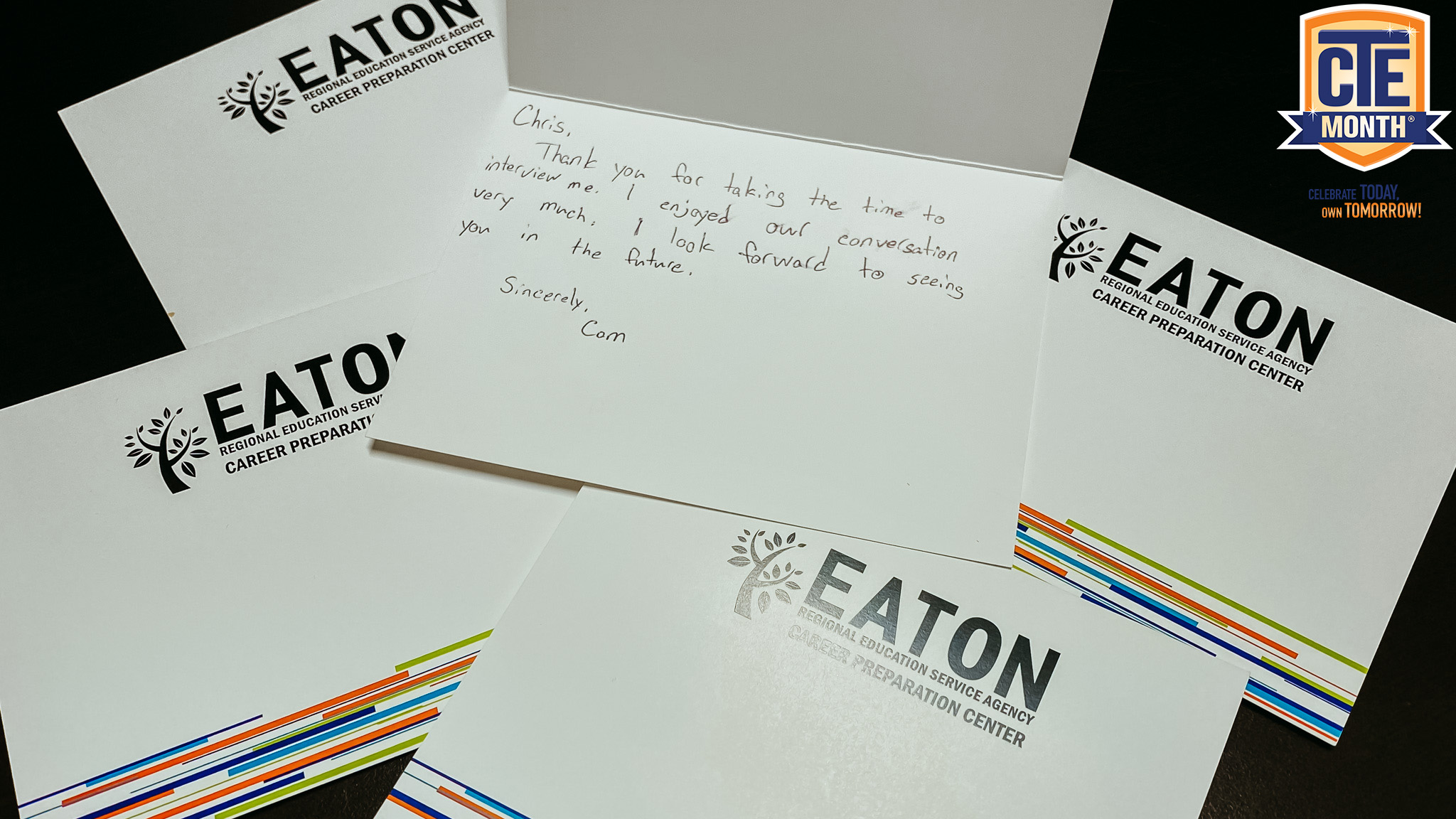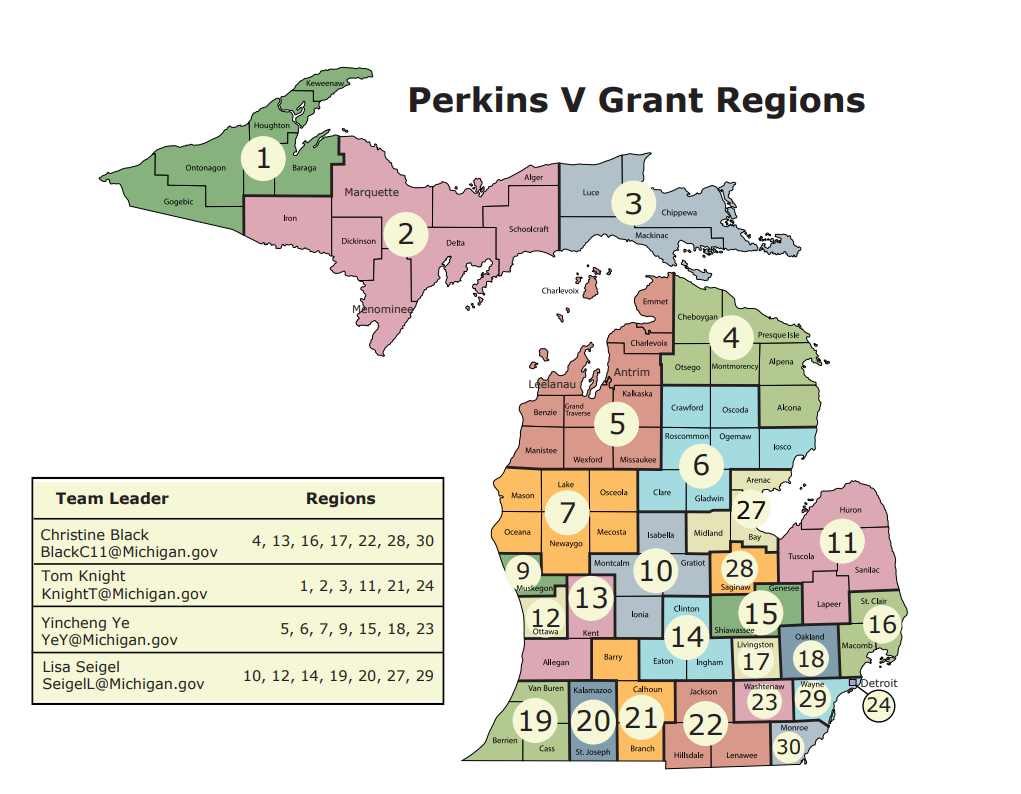Since we covered what CTE month is all about in our last blog (which you can find by clicking here), it’s time we guide you in the right direction to beginning that journey! With Laux Construction located in Mason, Michigan, we will be primarily focusing on the opportunities present in our great state, as well as those local to us. If you’re not from the area, don’t worry – we’ll provide plenty of links to assist your search wherever you’re located! Michigan is ranked number one for many reasons, some odd and some obvious. For example, Michigan is #1 in the nation for asparagus production along with Detroit being recognized globally as the Automotive Capitol of the World giving it the name ‘Motor City’.
Michigan receives federal funding for CTE which is more commonly known as Perkins V Grant Award. For 2022, the state received $44,937,488 in funding which is split into various departments and programs. A little over $4 million is designated to State Leadership which includes students in correctional institutions and justice facilities, as well as those with disabilities. Around $22 million is designated to students in secondary programs, and $14 million to those in post-secondary programs. Impressively, 96% of students attend post-secondary programs following a secondary CTE program and 84% of them are placed within a job, apprenticeship, or enter the military within their first 6 months of graduating. It is an unfortunate stigma that students who enroll in CTE programs are considered ‘less smart’ simply because they are pursing an education track that is focused on their passions. It’s also believed that CTE students don’t attend college because they aren’t able to keep up with the high-level of coursework. In reality, it is due to CTE students completing the relevant coursework for that degree in far less time than those who attend a 4-year institution for the same result. CTE students may be taking the shorter route, however, they are receiving both in-class and hands-on education for their chosen field and entering the workforces much sooner than their peers. Another benefit for CTE students is depending on the program they completed, they are likely to earn $10,000 more than their peers in their job!
Currently, Michigan has 17 sectors available that offer CTE programs across the state. Amongst those, Construction and Architecture ranks 5th for number of secondary programs available and 6th for total students enrolled in a secondary program. It is also the 2nd largest sector Michigan provides opportunities for. The available pathways in Architecture and Construction are –
However, that doesn’t mean other programs aren’t useful to the construction industry. Yes, Field staff must understand the costs of materials should change orders need to be placed or damages occur; Project Managers need to understand the budgets set by owners and ensure they’re maintaining their wishes; and CEO’s need to provide information about insurance, payroll, and a large multitude of areas relating to their company. However, there are other areas of construction that require the skills and knowledge of industries that have a completely different world from ours.
One sector that may seem completely irrelevant to construction and architecture is the Arts. However, some of the programs can be highly influential! For example, Fashion Design (19.0906) has already played a huge part in construction. Our workers must wear high visibility clothing, hard hats, and occasional safety gear that must be properly designed. With Fashion Design, you could be the next individual that creates a piece of clothing or PPE that can save a life on site! The Graphics and Printing Technology and Communications (10.0301) program can also be influential to those looking into pursuing architecture and creating blueprints, or working for local governments where the prints must be studied and approved before construction can begin. While there are multiple programs that may have no obvious correlation to our industry, there are others that are clear. The Transportation sector also offers programs that are used heavily in construction, such as Heavy Industrial Equipment Maintenance and Repair (47.0399) and Medium/Heavy Truck Technician (47.0613). Contractors who specialize in concrete and asphalt, or cranes and bulldozers, need workers that understand how to make their equipment run. Without these trucks, their work wouldn’t be possible! Although the people who are pouring the concrete are on site, there is someone back at the shop that has ensured the truck could get to its destination safely. This also includes companies that are responsible for material deliveries and pickups, which is relevant to quite literally everything our world does!



Some programs relevant to construction but on the office side of projects are ones that focus on the finances of the company. The Business and Finance sectors of Michigan CTE have programs that focus on Business Administration (52.0299) and Insurance (52.1701). Multiple members throughout a company are based around the financial tasks and the regulations relating to accountability with insurance. This is especially important for companies that work across multiple states, and even countries as regulations and laws vary across those boundaries. Another program that can be influential to the construction industry is Public Safety/Protective Services (43.0100). Many may believe this track is only useful for those pursuing medical fields, such as First Responders, Travel Nursing, etc. However, this program can be greatly beneficial to those seeking to pursue Construction Safety, or work for OSHA.
Apart from Laux Construction, there are plenty of other programs that are influential to specific trade contractors. The Manufacturing sector has four programs that all pertain to general trades. Welding, Brazing, and Soldering (48.0508) is useful for many trades that deal with metals and piping, while Woodworking (48.0701) is great for those interested in carpentry and framing. The STEM sector also provides programs in Mechanical Drafting (15.1306) and Engineering (15.0000), both of which is beneficial to those working with HVAC contractors and others. The programs themselves offer a lot of movement between industries, which in turn can broaden a student’s options when enrolling. The available locations to study, whether that be secondary or post-secondary, can also give a better idea of what industries are more advanced between states. For secondary education, many students do not have the option to move to another school district, or travel to career centers for CTE programs. Luckily, many high schools currently, or are slowly implementing, CTE programs on campus, or provide transportation to nearby career centers. By providing these opportunities, schools are now broadening their students eyes to the different jobs outside of education that truly requires in-depth schooling such as the medical field. With higher education, CTE can be a great addition to your college applications or receiving letters of recommendations. After all, they are what initially created the legislative movement to focus on growing CTE programs. Michigan State University was the first Agricultural College in the United States, and currently holds top rankings across the nation and globe for multiple programs. In fact, MSU was the first land-grant university and became the template for colleges and universities upon the signing of the Morrill Act in 1862 by President Lincoln (which we explored further in our previous blog)!
Another factor to consider if the financial aspect to these programs. Depending on the level of education, and additional materials that may be required for class, students are still provided opportunities. After a quick search on Google, students can find scholarships available to pursue post-secondary education after being involved with CTE prior or interested in pursuing CTE secondary programs! Students can also participate in Work-Based Learning, which is when they attend classes as normal but work as either an unpaid, or paid, intern or as an apprentice. This way, the student is not only learning, but making money for themselves! If your school doesn’t have CTE programs available, there may be organizations that do offer similar programs, that serve the same purpose. For example, Greater Michigan Construction Academy provides classes that focus on skilled trades in the construction industry for junior and senior high school students. There are also local Career Preparation Centers, widely known as RESA. More than likely your local county has one, or perhaps a neighboring county! This month, Chris Martin visited the Eaton County Career Preparation Center to assist students in preparing for interviews upon graduation. He walked the students through a real interview process in which they would experience, and provided them feedback on phrasing their responses, their body language, and ways they can stand out from other applicants.

Whether it be reading this blog post, making a quick Google search, or getting in touch with your school counselor or another staff member, diving into CTE should be exciting! You are making the first step towards a career that you are truly passionate about, or simply interested in, which not many can say they have done. Although the stereotypes for students in CTE can be debilitating, you must remember that you’re on the track that is best fit for YOU, and that is what’s most important!
Share this Post



